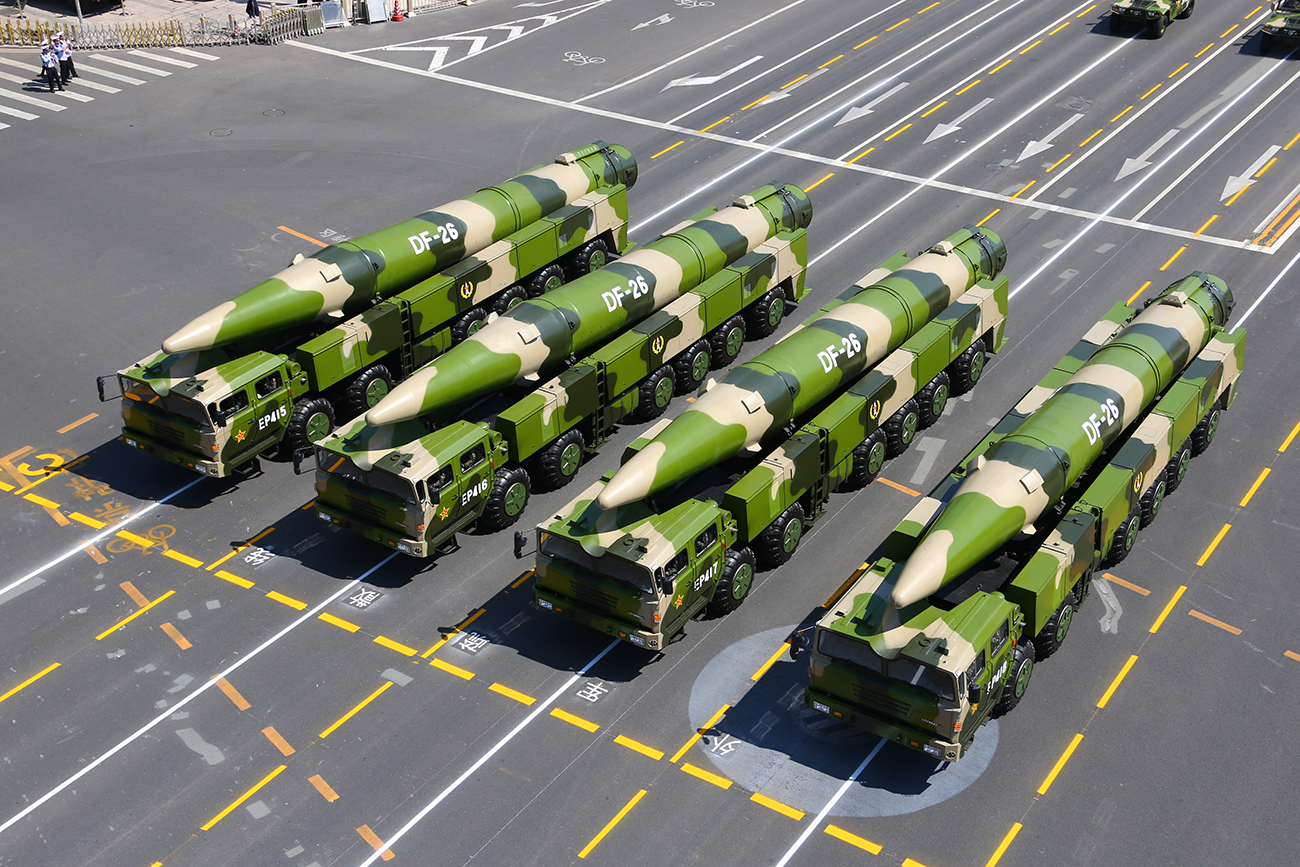
Beijing has a huge arsenal of missiles to combat THAAD.
ZUMA Press/Global Look PressFirst of all, one should note that the deployment of THAAD in South Korea has different implications for the security of Russia and China. The impact is minimal in Russia’s case, because THAAD is designed to intercept medium-range ballistic missiles. Russia does not have such missiles, since in 1987 the Soviet Union and the United States signed the Intermediate-Range Nuclear Forces Treaty.
Even if we assume that the THAAD system is upgraded with more powerful missiles, it would still not pose any threat to Russian strategic nuclear forces. Russian intercontinental ballistic missiles and nuclear missile submarines are far away from the Korean Peninsula and the flight path of Russian missiles flying to targets in the United States pass through the North Pole.
Thus, the Russian opposition to the deployment of THAAD is caused not so much by threats to security but by fundamental strategic considerations. Russia opposes placing elements of the U.S. missile defense system near its borders in principle. If THAAD complexes in South Korea were managed by the Korean military, not the U.S., there would most likely be no objection to the deployment of the complex. China’s position on the matter is much softer.
The U.S. has already signed contracts for the delivery of THAAD to the United Arab Emirates and Qatar. The fact that this was not done in the case of South Korea indicates that the true motives of deployment on the Korean Peninsula are far from declared.
Apparently, the U.S. wants to have extra capacity for radar monitoring of airspace over the Northeastern China, where China’s bases containing ballistic missiles, including medium-range, are stationed. In addition, there comes possible trajectory of Chinese intercontinental ballistic missiles being launched in the direction of the United States.
Accordingly, it is possible to assume that it will be China, and not Russia, which offers the most serious response to the deployment of THAAD from the military-technical point of view.
Russia will limit its actions to some acceleration of previously planned measures related to the modernization of the armed forces in the Russian Far East.
The most likely response to the deployment of THAAD would be the creation of specialized groupings intended for the destruction of the missile defense system on the Korean Peninsula.
The likely tool for this kind of preliminary strike would be cruise missiles: THAAD is not able to intercept them, especially in the case of a massive strike at known coordinates.
The obvious option for China may be deploying DF-10 missiles on the Shandong Peninsula. In addition, China can use technical means to strengthen its intelligence about the place of deployment of the THAAD.
Russia, unlike China, is not able to openly deploy ground-based medium-ranged cruise missiles, although the U.S. has been accusing Russia of doing so.
But the new Russian warships, as a rule, are equipped with Club (Kalibr) cruise missiles with a range over 2000 km. These complexes have been successfully tested in the course of the war in Syria. The construction of such ships for the Russian Pacific fleet was planned long before the plans to deploy THAAD in Korea.
In January 2016, Russia revealed plans to construct six project 636.3 diesel-electric submarines to be based in Vladivostok. These boats are able to carry Club missiles as well and were also tested during the Syria campaign.
The fleet is expected to adopt other ships able to carry Clubs including the Karakurt-class corvette, the construction of which has already begun.
Perhaps this will be the Russian answer to THAAD, although all of these measures would have been undertaken anyway.
Apart from told above, Russia and China will also carry out additional joint exercises and, possibly, coordinate in the field of technical intelligence to more effectively track the current location and mode of operation of the THAAD complex.
Vasily Kashin is a senior research fellow in the Moscow Based Institute for Far Eastern Studies and in the Higher School of Economics. Views expressed are personal.
If using any of Russia Beyond's content, partly or in full, always provide an active hyperlink to the original material.
Subscribe
to our newsletter!
Get the week's best stories straight to your inbox